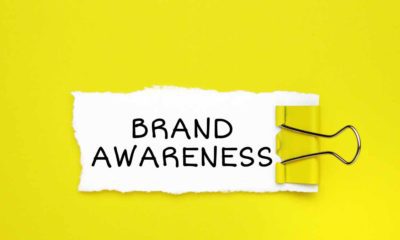Featured
Why Is Social Media An Important Part Of Inbound Marketing? 5 Reasons To Know
The interconnected world of today has given birth to numerous digital strategies that have revolutionized marketing. Among these, inbound marketing, particularly when coupled with social media, has proven to be particularly effective. Businesses that can successfully integrate social media into their inbound marketing strategy are reaping significant benefits.
Before delving into why social media is essential for inbound marketing, it’s important to understand what inbound marketing itself entails and how social media fits into this landscape.
What Is Inbound Marketing?
Inbound marketing is a customer-centric approach that involves attracting customers by creating and delivering content of value. Unlike traditional outbound marketing strategies that rely on disruptive techniques, inbound marketing draws customers towards the brand organically by aligning content with their interests and needs.
The Role Of Social Media In Inbound Marketing
When it comes to inbound marketing, social media plays a pivotal role. It provides a platform for businesses to reach a broader audience, engage directly with customers, and deliver content that resonates with them. Essentially, social media platforms become a stage on which brands can showcase their value and attract potential customers organically.
Why Social Media Is An Important Part Of Inbound Marketing
- Increases Brand Visibility and Awareness
- Encourages Customer Engagement and Interaction
- Facilitates Content Distribution
- Provides Valuable Customer Insights
- Enhances SEO Efforts
Increases Brand Visibility and Awareness
Consider social media as a bustling city square where people gather, connect, and exchange ideas. With billions of active users, this square is infinitely expanding. Brands, by making their presence felt here, can dramatically boost their visibility. Regular posting of engaging content, joining relevant conversations, and consistent branding across platforms can keep the brand at the top of the users’ minds. Additionally, the ability of social media users to share content they find useful or entertaining allows brands to reach new potential customers, enhancing brand awareness in the process.
[Read More] Inbound vs Outbound Marketing Explained
Encourages Customer Engagement and Interaction
Social media breaks down the barrier between brands and consumers, paving the way for genuine interaction. Unlike traditional platforms where communication is predominantly one-way, social media allows customers to express their opinions, ask questions, and engage in discussions. Brands can respond in real time, fostering a dialogue that can lead to stronger relationships. A responsive and engaging brand presence can also foster a sense of community among followers, making them feel more connected and invested in the brand’s success.
Facilitates Content Distribution
A key tenet of inbound marketing is providing value to the customer, often in the form of high-quality content. But creating great content is only half the battle – it needs to reach the right audience to have an impact. Social media acts as a high-speed distribution channel, delivering content straight to the consumer. Whether it’s an insightful blog post, an engaging video, or an informative infographic, sharing it on social media can increase its reach manifold. Not only does this direct traffic back to the brand’s website, but it also moves potential customers further along the sales funnel.
Provides Valuable Customer Insights
Social media isn’t just a platform for broadcasting messages—it’s also a rich source of data. With the right tools, brands can track user engagement with their posts, monitor sentiments about their brand, identify trending topics, and more. Direct interactions on social media platforms also offer qualitative insights, revealing customer preferences, pain points, and desires. Such information can be leveraged to fine-tune marketing strategies, develop products or services that meet customer needs, and deliver a superior customer experience.
Enhances SEO Efforts
At first glance, social media and search engine optimization (SEO) might seem unrelated. However, the two are intricately linked. While social media shares may not directly affect search rankings, they boost visibility, leading to increased traffic to the website. This uptick in traffic and the ensuing user engagement signals to search engines the site’s relevance and value, improving its search rankings. In essence, an active social media presence can complement SEO efforts, leading to increased visibility on search engine result pages.
Bottom Line
Social media, with its unparalleled reach and engagement, has emerged as a powerful tool in the inbound marketing arsenal. Its ability to increase brand visibility, foster meaningful customer interactions, amplify content distribution, provide valuable insights, and augment SEO efforts, makes it indispensable in the digital age. When wielded with understanding and strategy, social media can significantly amplify the impact of inbound marketing, propelling businesses toward greater customer engagement and success. In short, mastering social media within the realm of inbound marketing isn’t just an option—it’s a necessity for brands aspiring to thrive in the digital landscape.
[Read More] High Ticket Digital Marketing: What Is It & How Does It Work
Frequently Asked Questions
1. How much does inbound marketing cost?
The cost of inbound marketing can vary significantly depending on the scale and complexity of your strategy. It includes costs associated with content creation, SEO, social media management, marketing automation tools, and more. However, it’s important to note that inbound marketing is often a more cost-effective approach compared to traditional outbound marketing methods, primarily due to its focus on targeting and engaging with a relevant audience.
2. Is social media inbound or outbound marketing?
Social media can be used for both inbound and outbound marketing, depending on how it’s utilized. When brands use social media to broadcast their message widely without targeting or engaging with a specific audience, it acts as a form of outbound marketing. On the other hand, when social media is used to deliver valuable content, engage with followers, and build a community around the brand, it aligns with the principles of inbound marketing.
3. Why is goal setting important to inbound marketing?
Setting clear, measurable goals is essential to inbound marketing because it guides the strategy and provides a benchmark to measure success. Whether the goal is to increase website traffic, grow an email list, or boost conversion rates, having defined goals allows brands to align their content and marketing activities towards achieving those objectives. Moreover, regular review and adjustment of these goals ensure that the inbound marketing strategy stays relevant and effective.
Josh Dylan is a California-based digital marketing and SEO expert. He grew up in Southern California before attending school nearby. Over his tenure in the marketing industry, J has led SEO-content strategy for multiple sites with millions of UVPM. In addition, J holds extensive experience in both in-house marketing teams and the agency side. With a specialty in search-engine optimization, and a strong knowledge of PPC/SEM, content, analytics, and more, J. Dylan is an all-around expert in all things digital marketing and regularly contributes to industry-leading platforms. As the owner of Something Incorporated (somethingincorporated.com), Josh continues to use his industry expertise to guide small and medium-sized businesses’ marketing strategies.











